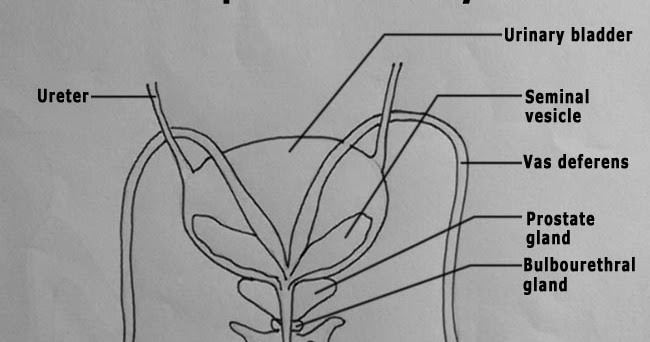The male reproductive system plays a vital role in human reproduction, and a comprehensive understanding of its anatomy and functions is crucial for anyone interested in human biology. This article provides an in-depth exploration of the male reproductive system from a front view perspective, offering detailed insights into its various components and how they work together to ensure fertility.
Overview of the Male Reproductive System
The male reproductive system is designed to produce, maintain, and transport sperm (male gametes) and to produce the hormone testosterone, which regulates many aspects of male health, including the development of secondary sexual characteristics. The system is primarily composed of external and internal structures that interact in a highly coordinated manner to facilitate reproduction.
Key Components of the Male Reproductive System
When viewed from the front, the male reproductive system consists of several external and internal structures. These include the penis, scrotum, testes, epididymis, vas deferens, seminal vesicles, prostate gland, and urethra. Understanding the function and location of each part helps to comprehend how the male reproductive system functions.
Penis
The penis is the external sexual organ through which urine and semen are expelled from the body. It is made up of three cylinders of erectile tissue, which become engorged with blood during sexual arousal, causing an erection. The penis serves both reproductive and urinary functions.
Scrotum
The scrotum is a pouch of skin that hangs below the penis. It contains the testes and helps regulate their temperature, which is crucial for sperm production. The scrotum moves the testes closer to the body for warmth or further away to cool them, ensuring optimal conditions for sperm development.
Testes
The testes, or testicles, are oval-shaped organs responsible for producing sperm and the male hormone testosterone. They are located within the scrotum and are essential for male fertility. Each testis contains seminiferous tubules, where sperm is produced. The testes are also responsible for the production of androgens, including testosterone, which is vital for the development of male characteristics.
Epididymis
The epididymis is a coiled tube located behind each testis. It serves as a storage and maturation site for sperm. Sperm produced in the seminiferous tubules travel to the epididymis, where they gain the ability to move and fertilize an egg. The epididymis also stores sperm until ejaculation occurs.
Vas Deferens
The vas deferens is a long, muscular tube that carries sperm from the epididymis to the urethra during ejaculation. It is part of the male duct system that facilitates the movement of sperm.
Seminal Vesicles
The seminal vesicles are glands located near the base of the bladder. They produce a significant portion of the fluid that makes up semen. This fluid contains fructose, which provides energy for sperm, and prostaglandins, which aid in sperm motility.
Prostate Gland
The prostate gland is a walnut-sized gland located below the bladder and surrounds the urethra. It produces a fluid that nourishes and protects sperm. This fluid, combined with sperm and other fluids, forms semen. The prostate also plays a role in the regulation of urine flow.
Urethra
The urethra is a tube that runs from the bladder through the penis. It has a dual function: it carries urine from the bladder and serves as the passageway for semen during ejaculation. It is an integral component in both the urinary and reproductive systems.
Function of the Male Reproductive System
The primary function of the male reproductive system is to produce sperm and transfer it to the female reproductive system for fertilization. This process begins with the production of sperm in the seminiferous tubules of the testes, followed by storage and maturation in the epididymis. During sexual arousal and ejaculation, sperm move through the vas deferens and are mixed with fluids from the seminal vesicles and prostate gland to form semen. This semen is then expelled through the urethra.
Additionally, the male reproductive system is responsible for the production of testosterone, which influences male physical traits, such as muscle mass, body hair, and voice depth. Testosterone also plays a critical role in regulating sperm production.
Male Hormonal Regulation
The production of sperm and testosterone is controlled by a complex system of hormones. The hypothalamus in the brain releases gonadotropin-releasing hormone (GnRH), which signals the pituitary gland to produce luteinizing hormone (LH) and follicle-stimulating hormone (FSH). These hormones then stimulate the testes to produce testosterone and initiate spermatogenesis (sperm production).
Testosterone levels are regulated by a feedback loop. When testosterone levels rise to a certain point, the hypothalamus and pituitary reduce the release of GnRH, LH, and FSH, thus controlling sperm production and testosterone secretion.
Male Reproductive Health
Maintaining a healthy male reproductive system is essential for fertility and overall well-being. Several factors can influence the health of the reproductive system, including lifestyle choices, age, genetics, and medical conditions. Some key aspects of maintaining reproductive health include:
- Diet and Exercise: A balanced diet rich in vitamins and minerals, particularly zinc and vitamin C, is vital for sperm health. Regular exercise can help maintain optimal hormone levels and promote healthy circulation.
- Avoiding Toxins: Exposure to environmental toxins, such as heavy metals, pesticides, and endocrine-disrupting chemicals, can negatively impact sperm production and testosterone levels. Limiting alcohol consumption and avoiding smoking are also crucial for male reproductive health.
- Regular Medical Check-ups: Routine visits to a healthcare provider are important for monitoring reproductive health. Conditions such as varicocele, erectile dysfunction, or infections like STIs can affect fertility and should be addressed promptly.
Conclusion
The male reproductive system is a sophisticated network of organs and structures designed to produce sperm and regulate the body’s sexual functions. A front view of the system reveals the essential external and internal components that work in harmony to facilitate reproduction. Understanding this system’s anatomy and function is critical for those seeking to maintain their reproductive health and for anyone studying human biology.

